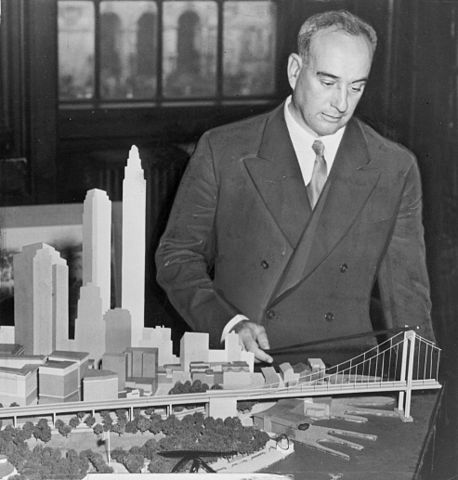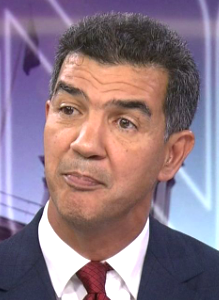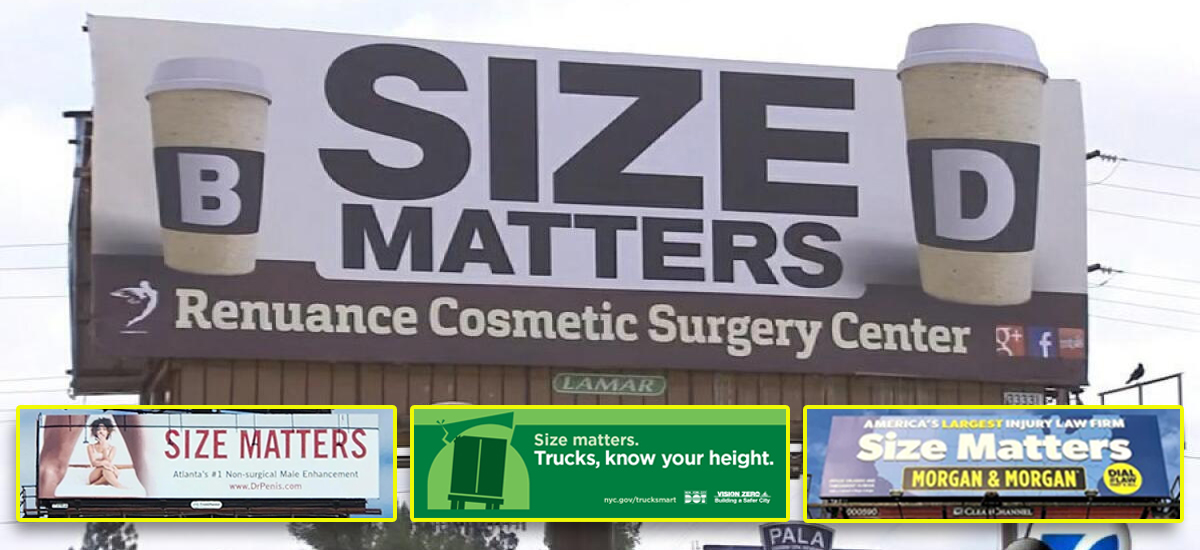"Master builder" Robert Moses practically created the blueprint for cities across America to use highways to destroy Black and brown neighborhoods, and perpetuated injustices that endure to this day — but experts said on Monday that his shattering legacy can, and must, be reversed.
As part of this year's all-digital edition of Transportation Alternatives' Vision Zero Cities conference, a consortium of academics, activists and elected officials revealed how they think cities can restore power to the communities harmed by Moses and his disciples. Though he's best known as a powerful public official who was instrumental in the growth of the Big Apple's highway system between the 1930s and 1970s, Moses's memory has since come to broadly symbolize the car-centered transportation planning that still dominates American cities.
But thanks to the rise of the Black Lives Matter movement and the impact of COVID-19, some believe his stranglehold could soon come to an end. Here are four ways that panelists Cary Moon, Linda Samuels, and Ydanis Rodriguez think cities are already making progress on rolling back Moses' influence — and planting something better in its place.
1. Re-engineer public engagement to redistribute power
Today, many urbanists condemn the urban renewal era for its use of "slum clearance" initiatives to destroy low-income neighborhoods with little opportunity for residents to fight back before their homes were razed. Today's departments of transportation might seem to engage in robust public engagement periods before they add highway lanes — but a lot of those efforts are just window-dressing on fundamentally Moses-esque projects, the panel argued.
"One of the questions for me is always this: is community engagement real, or is it disingenuous?," said panelist Samuels, associate professor of urban design at Washington University in St. Louis. "Are we just having conversations, or are we really re-distributing power? ... We need to talk about not just who is included in the conversation, but who actually gets to make decisions."

All three panelists agreed that projects don't just need more community feedback, but a total restructuring of the decision-making process to put communities of color at the center of the conversation — long before anyone starts sketching a blueprint. And that restructuring probably won't happen simply by waiting around for departments of transportation to invite average citizens to the table; more likely, it will take a fundamental change in how transportation choices are made.
"The current uprising against police violence is an amazing reset of local power," said Seattle activist Moon. "The Jane Jacobs of the future will probably be someone found in the Black Lives Matter movement."
2. Localize transportation decisions — and transportation dollars
Moses was a local official (and a surprisingly versatile one at that), but he wouldn't have been so influential without buckets of state and federal transportation funding at his fingertips — dollars that were almost exclusively devoted to building roads for drivers.
Moses's contemporary counterparts are still incentivized to put car travel above all else: biking and walking projects get just 2 percent of federal transportation dollars, and transit doesn't get much more. And non-drivers will often get short shrift until those grants are restructured to encourage cities put sustainable movement first.
"State legislatures love to be able to say that they're building highways, because highway spending is like a gift they can give to communities — 'Look, your tax dollars at work!'" Moon said. "[But that spending isn't] really being driven by what kind of economy we want to build, or what kind of community we want to live in."
As the leader of the People's Waterfront Coalition, Moon fought back against a project Moses would probably have been proud of: a $3.3-billion highway tunnel that did next to nothing to meet the city's aggressive carbon emissions reduction goals, achieve Vision Zero, or end health disparities caused by cars. The tunnel was built, but Moon believes that things could have gone differently if Seattleites had been allowed to hold the purse strings.
"Every tool in [the state department of transportation's] toolbox is geared towards building more highways, more high-volume arterials, more suburban sprawl — because that’s where their funding comes from," Moon said. "The whole system is set up to do exactly the things that those who care about public life in our cities don’t want...If we can get that money into the local government, we might be able to change things."
3. Embrace top-up urbanism
It's no surprise that Moses's name has become virtually synonymous with top-down transportation planning that ignored many average citizens' needs — the guy was famous for taking an airplane ride above New York City when he was plotting out the local highway system, rather than talking to the impacted people on the ground. But in the years since he governed, bottom-up buzzwords like "tactical urbanism" and "urban acupuncture" have gained a foothold in the transportation world — and to erase Moses's legacy, the panel suggested marrying these types of projects to the kind of governmental-scale resources that Moses enjoyed.
"What [former NYC Department of Transportation Commissioner] Janette Sadik-Khan did to reimagine Times Square — I call that top-up urbanism," said Samuels. "It's where bottom-up strategies [like reversible, and rapidly-prototyped street design experiments built quickly in response to community input] are being used by top officials, and bottom-up activists are being invited into collaboration with government. Right now, COVID-19 is a particularly interesting moment to explore that type of approach."
Samuels and her co-panelists argued that cities' efforts to repurpose streets for social distancing has exploded the very Moses-esque notion that our streets can only be meaningfully changed through a lengthy and expensive urban planning process endorsed by a small handful of (usually white and male) professionals. But she also cautioned that progressive urbanists must be especially mindful not to create inequities in other ways.
"One of the risks [of top-down planning] is that we can bypass the needs of some neighborhoods if we're not careful," Samuels added. "During the early days of COVID, we did all these projects, and then some people rightfully said, 'Wait, we’ve been waiting 10 years to get a project done in our neighborhood; now we’re in a crisis and you just do it for that neighborhood?' I think the takeaway there should be that we just need less red tape everywhere."
4. Treat mobility as a civil right
Perhaps the so-called "Power Broker's" greatest legacy was one of his most subtle: making "transportation" virtually synonymous with "driving" in the American consciousness, and erasing how the mobility of drivers can impact — and even destroy — the lives of those who can't (or simply choose not to) own a private vehicle.

"Mobility is a civil rights issue," said Rodríguez, a New York City council member and chair of the body's transportation committee. "Discrimination is what leads to people living 15 or 20 blocks from the closest transit stop that takes them to work. We know this."
Rodríguez and his co-panelists agreed that improving access to a broad range of affordable mobility choices is crucial to dismantling the racist intergenerational impacts of the federal highway system. But he also cautioned that it won't be as simple as building lots of bike lanes, sidewalks and micromobility stations — because those transportation realms aren't immune to top-down thinking, either.
"[New York City's bike share program,] Citi Bike was not created by people who were thinking about the poor," said Rodríguez, alluding to the program's existing footprint in largely wealthy neighborhoods. "It was created with hedge fund managers in mind. … Now, we need to work together and say, 'We need to expand [things like] Citi Bike.' If we don’t put capital behind it, it will continue to be something that only upper class people have access to … and everyone should have access to a train, a bus, a ferry, and a Citi Bike membership."
Other panelists offered a reminder that when we dethrone cars on our roadways, we can use that land for more than just sustainable mobility — and many of those uses can become powerful tools of reparations unto themselves. Turning parking lots into affordable housing, transforming extra driving lanes into safe play space for kids, and using deep asphalt shoulders to create stormwater-filtering rain gardens (done, of course, in collaboration with the affected communities) can all help dissolve racist legacies over time.
"When they design roads, highway engineers tend to go for ‘flat and black’ — as much asphalt as possible and the highest level of service as they can get," said Samuels. "We need to start thinking of infrastructure as multi-functional. Not just multi-modal — that’s the first step — but infrastructure has to serve all these other functions, too. How can we think of infrastructure as a public good? We have to get people to stop measuring dollars and start measuring value for the people who need it."






